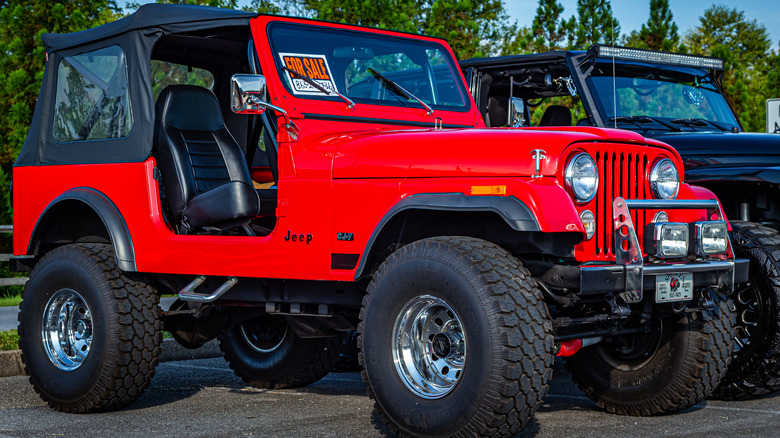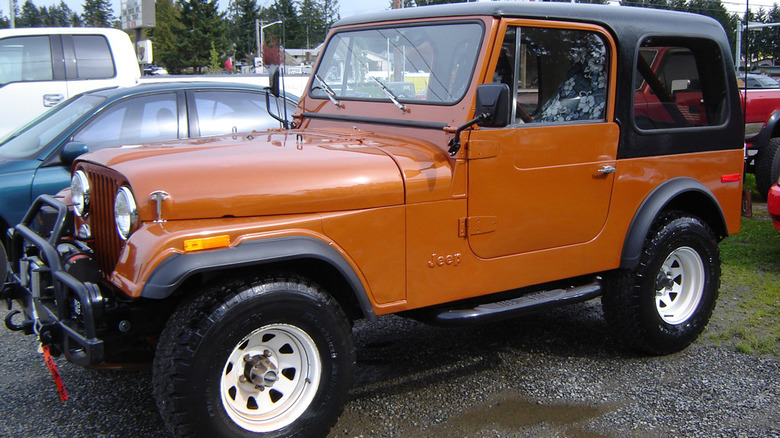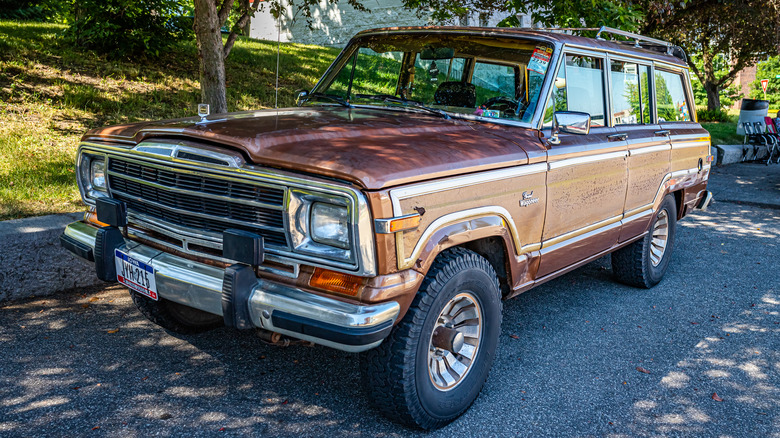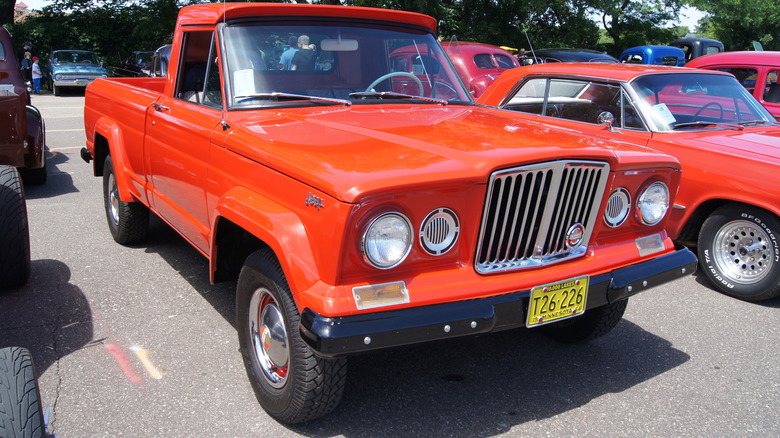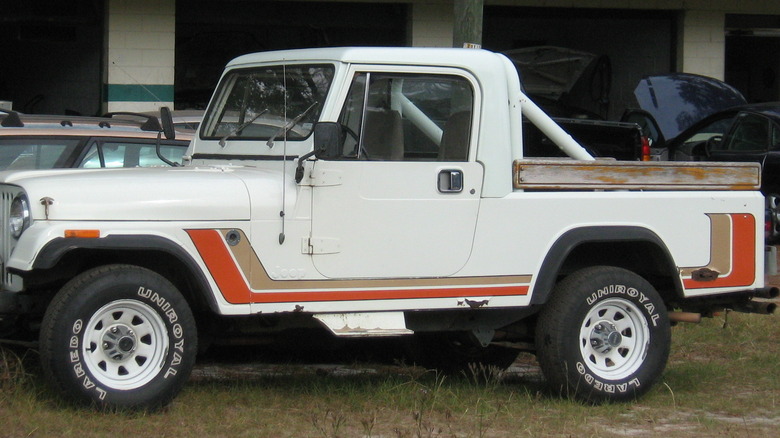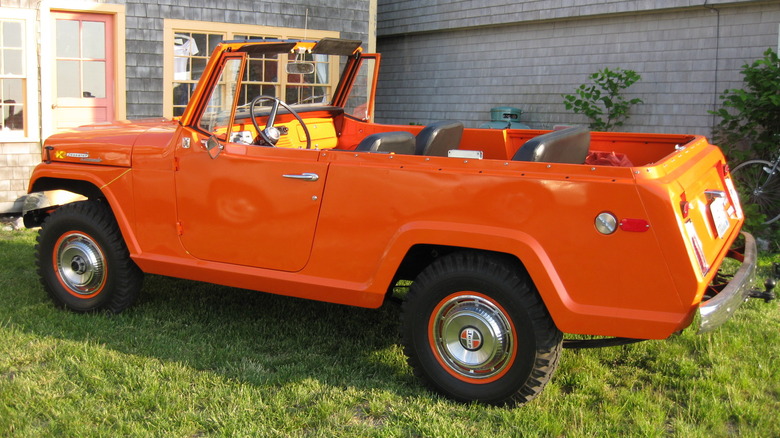5 Classic Jeeps That Make Great Restoration Projects
The Jeep brand has a legacy of making rugged vehicles dating back to World War II, but the badge has changed hands several times since Willys Overland built the first CJ models just after the war ended. Original manufacturer Willys merged with Kaiser Motors in 1953, becoming Kaiser Jeep, only to be bought out by American Motors Corporation in 1970. Chrysler bought Jeep from AMC in 1987, and Chrysler now belongs to Stellantis. Under Chrysler's ownership, many models in the Jeep lineup have acquired modern features like airbags, Bluetooth sound systems, and anti-lock brake systems.
While a vintage Jeep won't offer any of these amenities, classic Jeeps have a much better reputation for durability and reliability than their younger siblings. Aside from providing you a fun, go-anywhere ride, older Jeeps make great project vehicles thanks to a huge parts marketplace and robust support networks through online forums and local clubs.
The five classic Jeep models below are all easy to work on as well, and can provide you a substantial return on your initial investment, although once you're done fixing it up you might decide it's too much fun to part with.
CJ-7
The first civilian Jeep, the CJ-2A, would grow into the familiar Wrangler when Chrysler took over the brand. The last stop before that transition was the CJ-7, which was in production from 1976 through 1986. It was an update to the CJ-5, which had the longest manufacturing lifespan of any Jeep model at 30 years. The CJ-7 had a longer wheelbase than the CJ-5 to make room for an automatic transmission, and its square door openings distinguish it from the CJ-5's rounded ones. Engine options ranged from a 2.4 liter 4-cylinder diesel made by Isuzu to AMC's own 5.0 liter (304 cubic inch) V8.
The diesel version was made between 1980 and 1982 for sale outside the United States; the smallest engine for US models was the bulletproof 2.5 liter I4. Nearly 400,000 CJ-7s were built during the vehicle's lifespan, including special Renegade, Laredo, and Golden Eagle editions. Between 1976 and 1979, some CJ-7s were also equipped with the Quadratrac full-time 4WD system.
The CJ-7's high production numbers, lack of complicated electronics, and unbeaten upgrade availability make it a perfect project vehicle. The high ground clearance also makes access to undercarriage components relatively easy.
[Featured Image by Jim Isbell via Wikimedia Commons | Cropped and scaled |Public Domain]
SJ Wagoneer
Second to the CJ5 in longevity among Jeeps is the SJ Wagoneer, which debuted in 1962 as a 1963 model and stayed in the Jeep stable until 1991. It shared a body-on-frame construction with the first-generation Gladiator pickup, which was introduced that same year. It was initially offered in two- and four-door models with rear- and four-wheel drive drivetrains, but in 1969 the less popular two door and RWD versions were dropped.
The XJ Cherokee that appeared in 1984 was initially intended to displace the SJ Wagoneer, but the older model was still in demand so Jeep kept it around for another seven years. The Grand Cherokee was issued in "Grand Wagoneer Limited" trim in 1993, but aside from that anomaly, the nameplate stayed on the shelf until Jeep brought back the Wagoneer and Grand Wagoneer in 2022.
The Wagoneer has a long enough lifespan to have existed under the ownership of Willys, Kaiser-Jeep, AMC, and Chrysler. While the style of the SJ Wagoneer and Grand Wagoneer has remained largely unchanged, those built during the AMC years (1971-1987) are most beloved by collectors.
The SJ Wagoneer's classic lines and wood-grain paneling make it a favorite of Hollywood producers; Anna Gunn's Skylar White of "Breaking Bad" drove a red 1989 Grand Wagoneer for most of the series. SJ parts are easy to come by online, and you can turn a few thousand dollars into $50,000 or more with a meticulous restoration.
SJ Gladiator pickup
The Wagoneer's pickup sibling, the SJ Gladiator, hit showrooms alongside the Wagoneer for the 1963 model year and stayed there until Chrysler took over the brand in 1987. The Gladiator shared a front end and drivetrain with its SUV cousin and was initially offered in one of two sizes: the 120-inch wheelbase J-200 or the 126-inch J-300. Another zero was added to each model designation in 1965, and the Gladiator moniker was dropped in 1971. Three years later, Jeep shortened both versions of its pickup and relabeled them the J-10 (119 inch wheelbase) and J-20 (131 inches). Those models stayed on the lot until AMC sold the brand. Chrysler morphed the J series into the Comanche, which stayed in production until 1992. The Gladiator nameplate then sat dormant until Stellantis brought it back in 2020.
The 1968 J-3000 is the best equipped in factory form, with a Dana 44 axle in front, a Dana 53 in back, and Buick's "Dauntless" 350 cubic inch V8 engine. SJ Gladiators aren't in as high demand as some other classic Jeeps, but they were also not produced in as high numbers as the CJ7 or Wagoneer. This can make finding one worth restoring a challenge, but once you do, you'll find yourself in possession of a rugged, good-looking truck that can fetch you upwards of $25,000.
[Featured image by Greg Gjerdingen via Wikimedia Commons | Cropped and scaled | CC BY-SA 2.0]
CJ8
The Wagoneer isn't the only classic Jeep with a pickup sibling. The CJ-8 Scrambler was built between 1981 and 1986 as an extended-bed version of the CJ-7 with a reverse mullet "party in the front, business in the back" design that appealed to everyone from shepherds to surfers. Motor Trend cites a relatively low production run of just under 28,000 units, about one for every 14 CJ-7s made. This makes CJ-8s rare and often pricey on the secondhand market, but with the same big catalog of aftermarket, replacement, and upgrade parts as the CJ-7, plus a supportive community of fellow owners.
CJ-8s came from the factory with a removable half hardtop that covered the cab only. From the front bumper to the seats, CJ-8s are nearly identical to CJ-7s; the clearest differences are the 103 inch wheelbase, 10 inches shorter than the CJ-7, extended bed, and slightly different roll bar.
[Featured image by CZmarlin via Wikimedia Commons | Cropped and scaled | Public Domain]
Commando
A classic Jeep model that often gets lost in the sea of CJs and SJs is the Commando, which began life in 1948 as simply the Jeepster, a Willys Overland convertible that was labeled a "sports car" but failed to live up to that moniker with its underpowered four-cylinder "Go-Devil" engine. Kaiser brought it back as the Jeepster Commando in 1966 with the more robust F-head Hurricane four-cylinder and Buick's Dauntless V6 as engine options. It was available in station wagon, convertible, pickup, and roadster body styles.
For the 1972 model year, AMC swapped the "Jeepster" half of the name for the more familiar "Jeep" and began outfitting the Commando with its own 4.2 liter straight six and 5.0 liter V8 engines. The Commando only lived until the 1973 model year, and saw a production run of just over 20,000 units (via Kaiser Willys Auto Supply). While that low number makes the Commando hard to find secondhand, it also makes this a head-turning vehicle wherever you take it and a valuable one to resell once you get it all fixed up.
[Featured Image by Seduisant via Wikimedia Commons| Cropped and scaled| CC-By 3.0]
